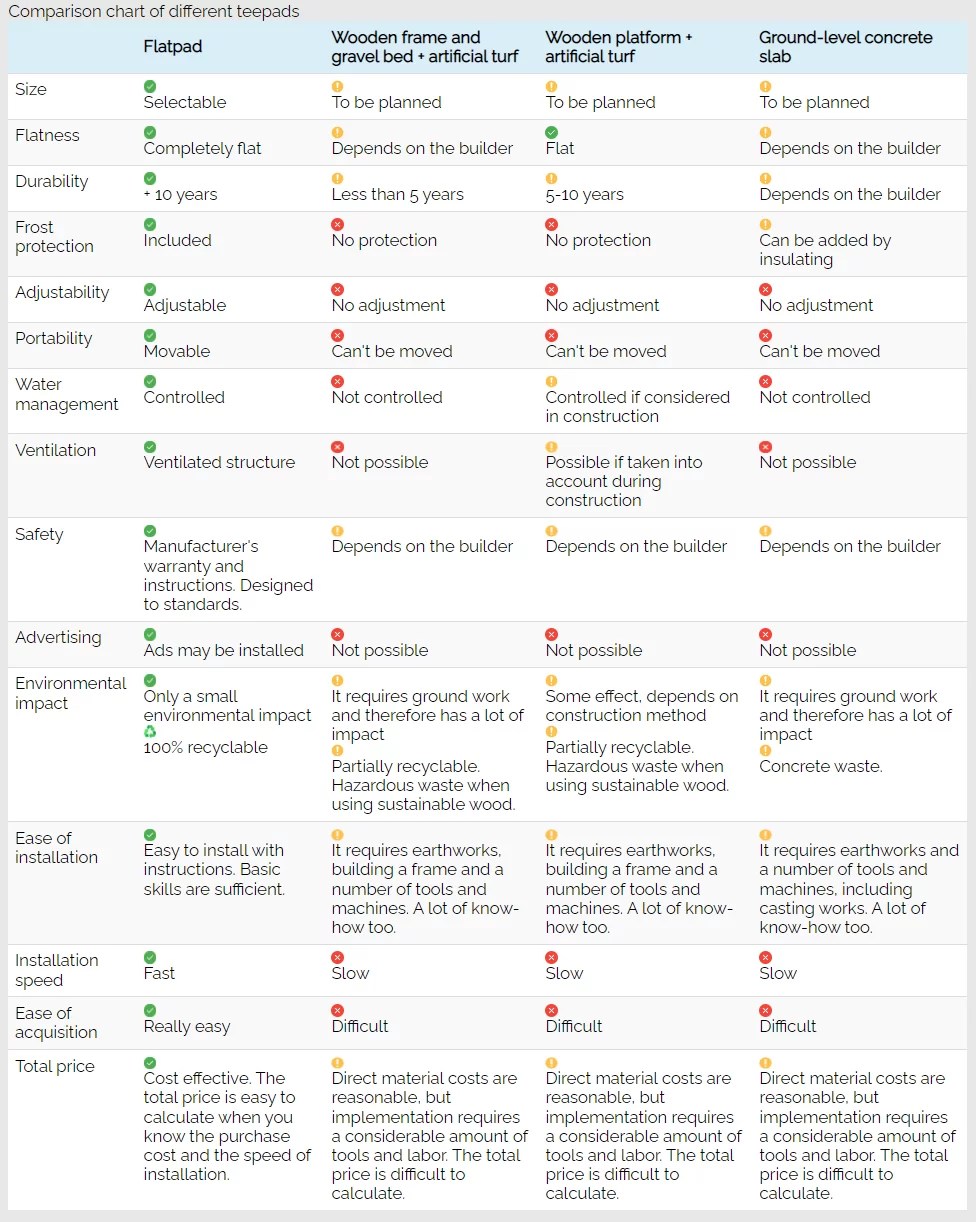That's a course maintenance issue, not a design issue. Given a similar level of neglect over a similar number of years, is there anyone who honestly believe that the area around a Flatpad would not experience a similar degree of erosion?
If I'm understanding the flatpad design correctly, no, as it doesn't seem to prevent water from flowing underneath it. It's not channing the water in the same way the side of a concrete pad does.
